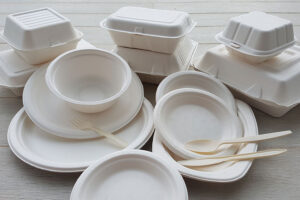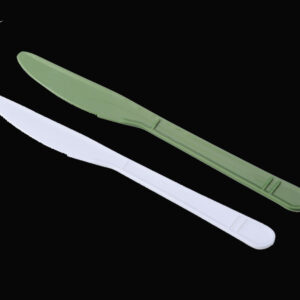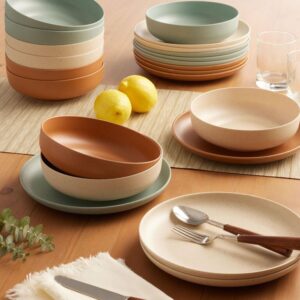There are many kinds of disposable tableware. Among them, disposable Eco-friendly tableware is easy to recycle, easy to dispose of, and easy to degrade. Then, how many types of Eco-friendly tableware are there? The source of raw materials, production process, degradation method, and recovery level are divided into biodegradable, light/biodegradable materials, and easy-to-recycle materials. What kind of lunch box is the genuine Eco-friendly lunch box? How to distinguish between authentic Eco-friendly lunch boxes and fake Eco-friendly lunch boxes? Find out below.

There are several types of Eco-friendly tableware
The disposable tableware is divided into the following three categories according to the source of raw materials, production process, degradation method, and recycling level:
1. Biodegradable categories: such as paper products (including pulp molding, cardboard coating), edible powder molding, plant fiber molding, etc.;
2. Light/biodegradable materials: light/biodegradable plastic (non-foaming) type, such as photodegradable PP;
3. Materials that are easy to recycle: such as polypropylene (PP), high impact polystyrene (HIPS), biaxially oriented polystyrene (BOPS), natural inorganic mineral-filled polypropylene composite products, etc.
Is Eco-friendly tableware the same as degradable tableware?
No. Eco-friendly tableware includes three types: easy to recycle, easy to dispose of, and easy to digest (degradable), and degradable is just one of them. Degradation is only a supplement to recycling. When specific packaging material is challenging to recycle after use or the recycling value is low, it Can be considered degradable packaging.
Is degraded tableware no longer required to be recycled?
No. Any material should not be discarded indiscriminately and should be actively classified and recycled to reduce resource waste and environmental pollution. Even degradable products need proper disposal or utilization. It is nonsense to talk about the speed of product degradation and degradation products without specific environmental factors.
What is natural Eco-friendly tableware?
1. The product has uniform color and texture, good hand feeling, and high strength.
2. There is no peculiar smell when serving hot and cold food.
3. Easy to recycle and utilize or environmental degradation.
4. It is harmless to the ecological environment and human health and meets the national food hygiene standards.
Do you know the characteristics of fake Eco-friendly lunch boxes?
1) It is soft to the touch. The powder will fall off when you rub it, break when you tear it hard, and smell spicy and choke your eyes.
2) It is heavier than qualified products and the price is lower. For example, if the ordinary rice box is more than 15g, the price is generally less than 0.12 yuan.
3) There are words such as “degradable lunch box,” “Eco-friendly lunch box,” and “urban environmental protection” on the surface of the product, which is not necessarily Eco-friendly.
why there are actual & fake Eco- friendly lunch boxes ?
The cost of actual Eco-friendly lunch boxes is high, and the cost of fake Eco-friendly lunch boxes is low. Some manufacturers are subject to conflicts of interest and ignore consumers’ health. Produce and sell fake Eco-friendly lunch boxes in violation of the standards set by the state.
Recommendations for use: Try not to use disposable items.
Recycle as much as possible of single-use items.
Disposable items should not be heated and processed together with food.







